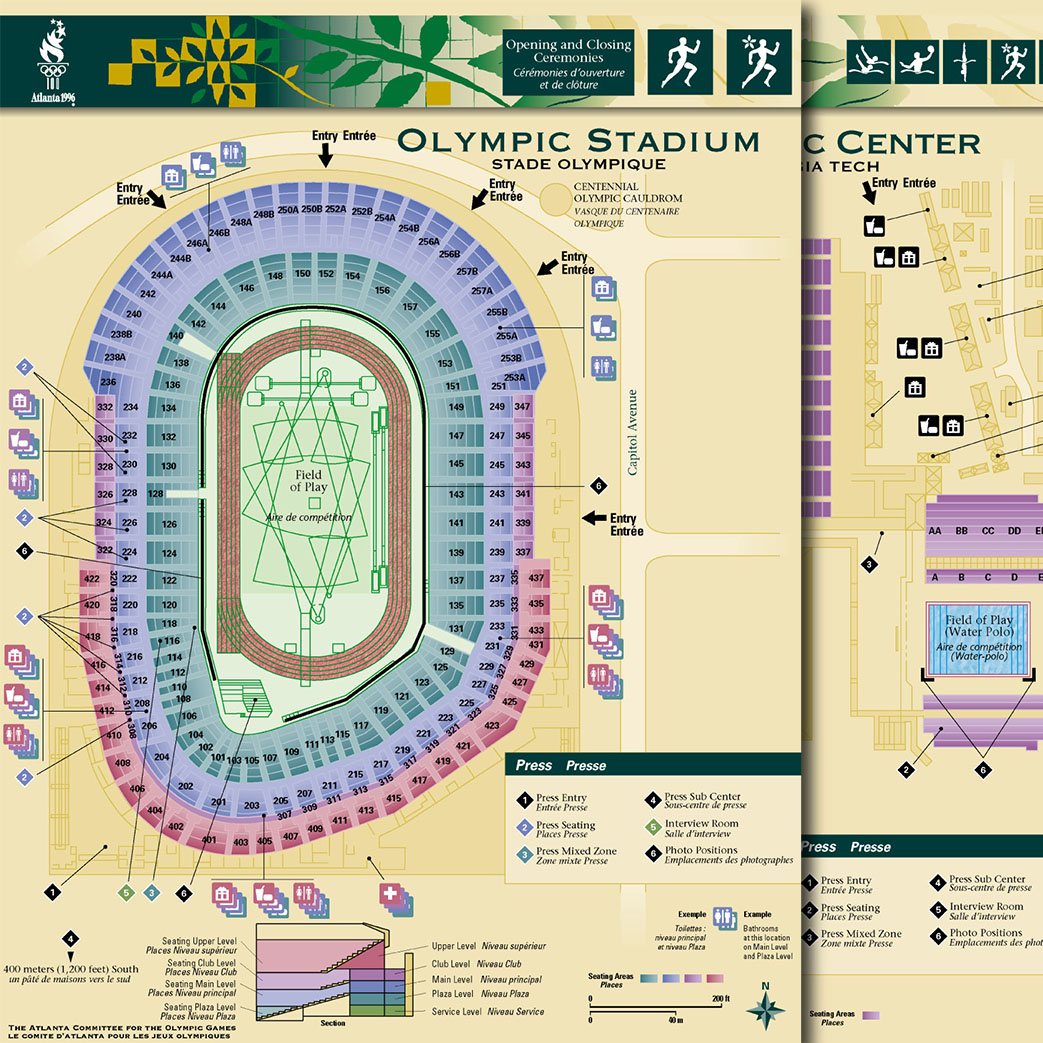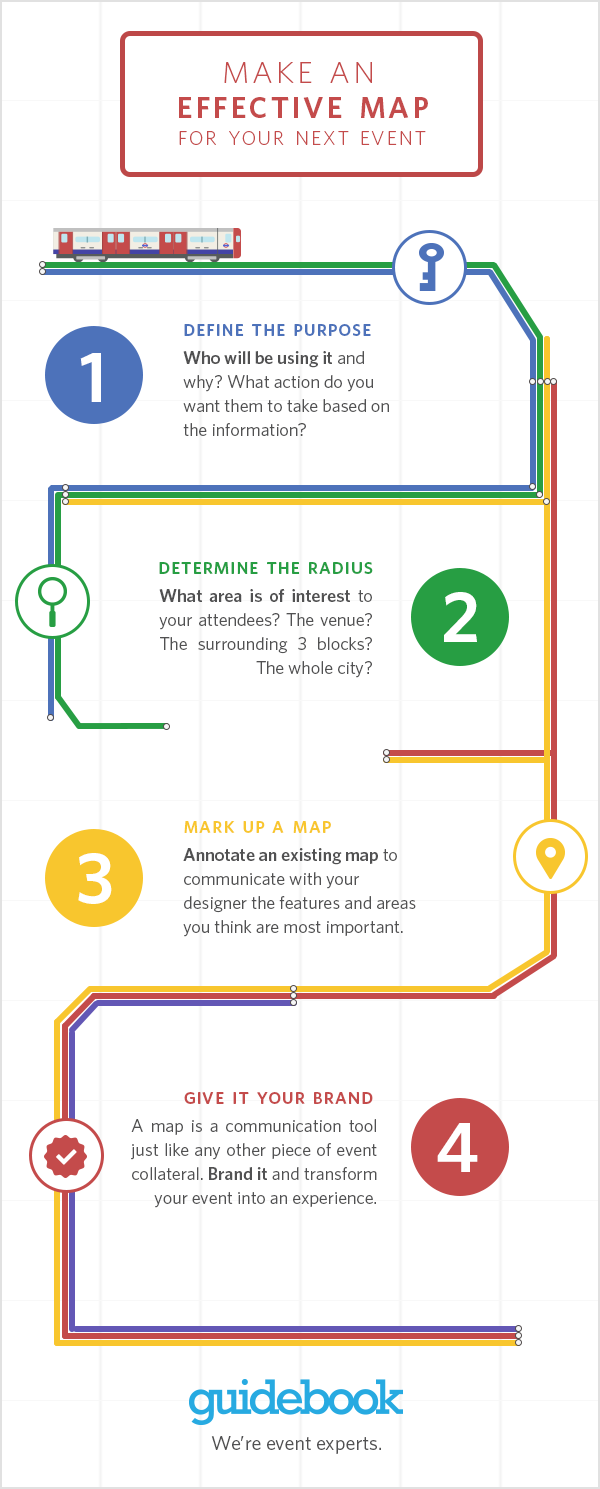Why a Map is at the Heart of your Event Design
What can a veteran cartographer can teach you about event design?
Event design is about creating a cohesive experience for your attendees. And mobile tech is allowing you to put that cohesive experience right in your attendees’ hands – it’s immediate, it’s ubiquitous and it customizes to meet your needs. But simply adopting mobile tech doesn’t mean you’re always making the most of it.
There are many considerations for event design and, by extension, your event’s guide, but at the core of your event is a schedule, a map, and lists (of speakers, booths, whatever it may be). In one way or another, you’re going to gather these elements and provide them to your attendees. And it’s important that they all work in agreement. But which is the element that ties them all together? The heart of your event, it turns out, is the map.
Meet Bruce
 Bruce Daniel is a designer and cartographer. His award-winning work runs the gamut from cartographic design for three major online map systems to map design for the Metropolitan Museum of Art, the National Gallery of Art, and the Atlanta Committee for the Olympic Games. For Bruce, “A map is a fabulous communication tool. It references a modality that people from all different cultures around the world understand.”
Bruce Daniel is a designer and cartographer. His award-winning work runs the gamut from cartographic design for three major online map systems to map design for the Metropolitan Museum of Art, the National Gallery of Art, and the Atlanta Committee for the Olympic Games. For Bruce, “A map is a fabulous communication tool. It references a modality that people from all different cultures around the world understand.”
As an event planner, you have the ability to tap into the power of this almighty communication tool. And thanks to mobile technology, maps are more a part of our daily lives than they ever have been. “Tech has brought maps to the forefront as a way of organizing data,” says Bruce. It’s time to start thinking of maps at your events as a primary way of communicating with your attendees and a critical part of your event design.
Maps orient people
If you haven’t created a map before, or have only ever provided the xeroxed version your venue gave you, the process of creating an event map may seem daunting. The reality, however is that maps allow your attendees to orient themselves and, it turns out, your attendees crave physical context.
If you think back to a time when someone drew you a map, it was probably accompanied by verbal directions. The map was an aspect of that person’s communication to you – an element of a larger story. Your event map is an important element of your event design’s story and should be designed just as carefully as you would the schedule or logo.
Now’s the time to budget for a graphic designer to tackle your map. Bruce suggests some invaluable steps for communicating with a designer to create a custom map as a part of your event design strategy:
Define the map’s purpose
Knowing who will be using the map and for what purpose will help you weigh certain basic considerations. How literal do you make the map? What are the main data points you want to include? “Maps fail when you just put data out there and it’s not effective communication,” says Bruce.
Determine its radius
This is an easy one. What physical space do you need to cover? Will your event mostly be confined to a few rooms in a hotel, or does it cover the better part of a whole city? The radius will dictate the level of detail you’re able to include. And maybe you need a couple – a macro map and a micro map.
Mark up an existing map
Odds are your venue has given you a floor plan that you can use as a great starting point. Use a highlighter to show your designer what’s important and annotate the features so that they will know what to include. This will communicate to the designer where they should focus their design efforts.
Brand the map to your event
If you want your map to integrate as a seamless element of your event design – make sure it fits in with the overall branding of the event. Your attendees will respond well to cohesion and be primed to use the map as a tool, rather than just a reference point. “It’s a missed opportunity not to brand locational information,” warns Bruce.
Maps enable emotional memory
As event planners, we want people to come away from our events feeling as though they had an experience that left an impression as a result of effective event design. The truth is, people associate locations with memory. Your favorite ice cream parlor wouldn’t quite be what it is without the context of place. When your attendees are having new experiences, they’ll pair those experiences in their mind with physical location. It’s a phenomenon Bruce terms “geospatial emotional resonance.”
With a good map to reference, attendees can reflect on their experience after the event by pairing memories with locations on the map itself – even if it was just a boring old conference room. They’ll be more likely to create a detailed memory and, as a result, count it as a positive experience. Attendees with detailed, positive memories of your event make for return attendees next year.
Bruce puts it this way: “I’ve been to conferences or events where I’ve wanted to save the badge or some element of the swag bag, but I don’t think I’ve ever wanted to save the map. Yet there’s really no reason why that should be. A map can be part of the branding, the experience, the takeaway – part of the memory of a place.”
Maps can be an editorial tool
The act of designing your map can also inform the event design itself. By deciding the content of your map, you must also engage in a natural editing process. Including every POI on a map is an impossible task – but who would want that anyway? Editing your map will force you to think like an attendee: what’s the most important stuff and how do I get there?
Creating a map that will be displayed in your mobile event guide is an event design feat in and of itself. A compact delivery system like a smartphone naturally limits the amount of information and context you can deliver on the actual map itself – so what is important enough to display? And where might you be able to refer attendees to other areas of your mobile guide for more detailed information?
Crafting the content of your map in specific ways can also cause people to take action. A topographical map of San Francisco can keep you from getting stuck walking up a steep hill. A brightly colored information desk will keep drawing attendees back to that location when they have a question while at your event. If your event venue is tight on space, consider suggesting a traffic pattern on the map. Color code breakout rooms to their corresponding tracks in your event schedule.

Bruce Daniel faced a particularly difficult editing challenge when creating the maps for Atlanta’s 1996 Olympic Venues.
Maps are at their best when they’re interactive
Pete Lada is the Creative Director and Co-founder of Guidebook. For him, mobile event guides like the ones you can build with Guidebook were born of necessity. “User experience for navigating an event has traditionally been pretty terrible,” he says. “You have a piece of paper that’s not interactive and it becomes outdated as soon as it’s printed.” For him, being able to interact with the map may be the most important feature of your mobile guide.
Pete stresses the importance of using your map as a hub for all the other information in your guide. Take the time to connect areas of your map to sessions and list items (like exhibitors and presenters) and your attendees will have a deep, interactive tool at their fingertips that enriches their event experience.

The best thing about an interactive map is that you can extend beyond the limitations of a small phone screen. Linking to other areas of your mobile guide can allow you to become as granular as you want with the data you present. Maybe you have a whole list of just your venue’s drinking fountains. Or preempt one of the most frequent questions you’ll get – “Where’s the bathroom?” – with a list of your venue’s restrooms linked to the map.
Event design is a tricky business and takes plenty of careful thought. Next time put your event map at the forefront of your design and see where it leads you. It might inspire some bold ideas (giant interactive wall map, anyone?), but will most certainly lead to engaged, curious and self-reliant attendees.
Learn more about using interactive maps in your Guidebook guides.
Regularly hear from interesting experts talking about event planning by subscribing to our blog!



